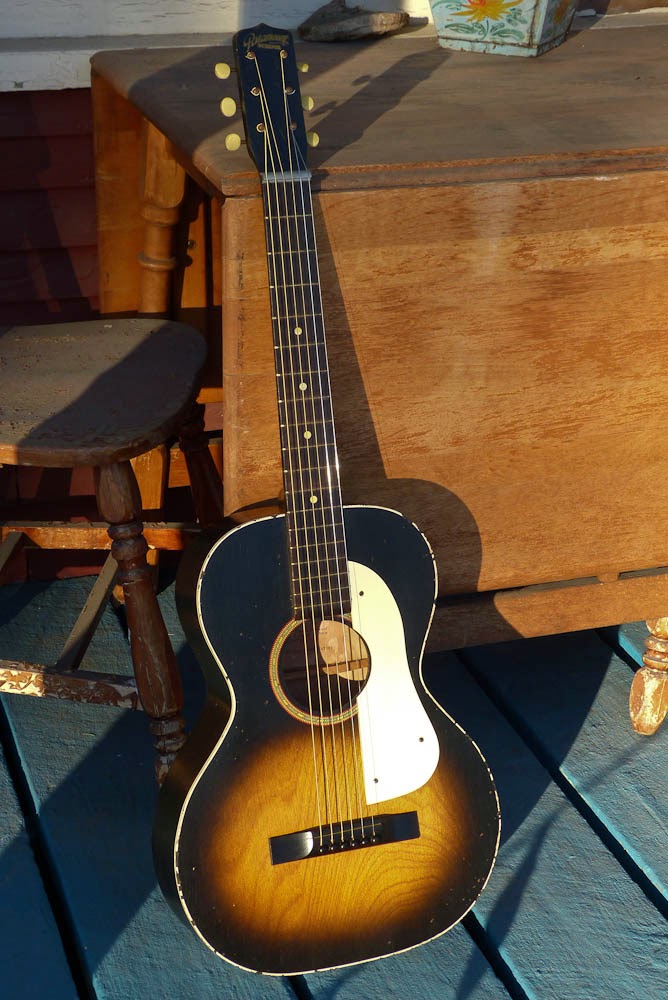c.1930 Oscar Schmidt-made Paramount School Hawaiian Guitar
This guitar has spent its entire life born, bred, and played as a raised-strings "Hawaiian" or lap guitar and that's what I've fixed it up to be, too. A healthy 1/32" warp overall in the neck convinced me that it would be best that way as well. Work included regluing all the top braces, some seam repairs, a hairline crack repair to the top (under the pickguard), a new set of ebony bridge pins, and bolt-reinforcement countersunk in the heel.
While it bears a "Paramount School" mark at the headstock and a "National Hawaiian Conservatory" label in the soundhole, this guitar was made by Oscar Schmidt in New Jersey and has the typical styling of an early-30s Schmidt including faux (painted) binding and a foil-backed decal around the soundhole as a rosette. It's a hair smaller than a regular 0-size guitar.
While it bears a "Paramount School" mark at the headstock and a "National Hawaiian Conservatory" label in the soundhole, this guitar was made by Oscar Schmidt in New Jersey and has the typical styling of an early-30s Schmidt including faux (painted) binding and a foil-backed decal around the soundhole as a rosette. It's a hair smaller than a regular 0-size guitar.
The guitar is all-birch in construction and has a sunburst, plain-Jane sort of finish. Both the fretboard and bridge are ebonized maple or similar.
Everything but the bridge pins are original equipment on this guitar. The headstock has a tiny repaired chip-out crack on its top edge below the low E string post. Nothing structural there. I'm almost certain that this is the raised nut that came with the guitar but who knows? This style was made for years and years though the fretboard marks line up with it.
Yellow-pearl dots in the board and original brass frets. I cleaned them up lightly so they'd be easier to use as position reference and dressed the barbs at the edge of the board. The strings are a set of 12s and I've got it tuned to open D at the moment.
The rosette decal has a metallic backing which means the inner ring shines a bit. There's a hairline crack under the pickguard that I've cleated and filled.
Original bridge, still glued nicely, with original fret saddle. There's a small bit of belly but not enough to worry about. It's about average for something that's ladder-braced would've probable been tuned in low bass A Hawaiian stringing for most of its life.
Note what looks like a long scratch on the lower bout side -- that's the only other crack -- a long-since glued hairline that's stable.
Note the small divot in the back of the heel -- I countersunk a bolt (tensions up at the neck block internally) in the heel to keep it rock-solid for the future. I didn't do a neck reset on this guy as it didn't need one, but on something that's going to take above-average tension for lap play, being safe is a plus.
Original endpin.
Model #827, eh?
And an original chip case, in decent shape, too!

















Comments